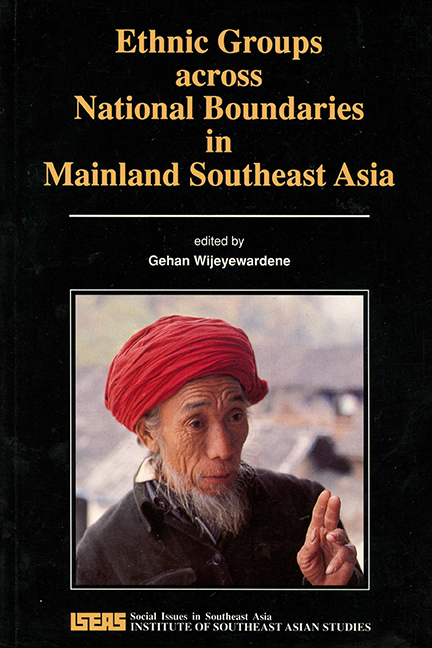Book contents
- Frontmatter
- Contents
- Foreword
- Contributors
- Acknowledgements
- 1 Introduction: Definition, Innovation, and History
- 2 Language and Ethnicity: The Mon in Burma and Thailand
- 3 Thailand and the Tai: Versions of Ethnic Identity
- 4 A Comparative Study of Structure and Contradiction in the Austro-Asiatic System of the Thai-Yunnan Periphery
- 5 Ethnicity, Nationalism, and the Nation-State: The Karen in Burma and Thailand
- 6 Capitalism and the Structure of Yao Descent Units in China and Thailand: A Comparison of Youling (1938) and Pulangka (1968)
- 7 Squatters or Refugees: Development and the Hmong
- 8 Afterword: “Ethnicity” and Anthropology
- Index
- THE EDITOR
2 - Language and Ethnicity: The Mon in Burma and Thailand
Published online by Cambridge University Press: 21 October 2015
- Frontmatter
- Contents
- Foreword
- Contributors
- Acknowledgements
- 1 Introduction: Definition, Innovation, and History
- 2 Language and Ethnicity: The Mon in Burma and Thailand
- 3 Thailand and the Tai: Versions of Ethnic Identity
- 4 A Comparative Study of Structure and Contradiction in the Austro-Asiatic System of the Thai-Yunnan Periphery
- 5 Ethnicity, Nationalism, and the Nation-State: The Karen in Burma and Thailand
- 6 Capitalism and the Structure of Yao Descent Units in China and Thailand: A Comparison of Youling (1938) and Pulangka (1968)
- 7 Squatters or Refugees: Development and the Hmong
- 8 Afterword: “Ethnicity” and Anthropology
- Index
- THE EDITOR
Summary
Mon is a major regional language of mainland Southeast Asia today. Mon settlements can be found in Lower Burma and central Thailand, with enclaves located in the north and the south.
Previous studies have presented conflicting demographic and sociolinguistic data which I shall evaluate below; demographic records available permit the extrapolation of a figure close to one million for the Mon population in Burma and Thailand combined. In spite of persistent reports over the past century that Mon is a dying language, there is no evidence to suggest that its use is declining in Burma. In view of the fact that Mon themselves tend to equate ethnic identity with language, language-related issues warrant further discussion.
This paper is divided into five sections:
1. Ethnonym
2. Language
3. Location
4. Demography
5. Language maintenance and language shift
I hope that in the discussion which ensues, a number of misconceptions about Mon can be put to rest.
Ethnonym
Five ethnonyms are attested, two of which are doublets and four of which were used at various times as exonyms:
The first three can be traced etymologically to the Old Mon endonym rmeñ attested in Mon for the first time in Kyanzittha's New Palace Inscription (IX) of 1102, and reconstructed by Shorto as /rmɔɲ/. From this early form, represented by OM rmeñ, derives the Northern Thai exonym /mεɲ/. The Central Thai form /ra:man/ is likely to be derived from a Palicized OM form. However, some five centuries earlier the ethnonym for Mon occurs in four pre-Angkor Khmer inscriptions:
Linguistic and art-historical evidence suggest that by the sixth century Khmer and Mon had already been in contact in the Chao Phraya basin.
Further evidence for this ethnonym may be found in two Old Javanese inscriptions where it occurs alongside the names for Cham, Khmer, and Tamil (Brandes 1913):
This suggests early contacts with both Khmer and Cham outside the mainland.
- Type
- Chapter
- Information
- Ethnic Groups Across National Boundaries in Mainland SEA , pp. 14 - 47Publisher: ISEAS–Yusof Ishak InstitutePrint publication year: 1990

